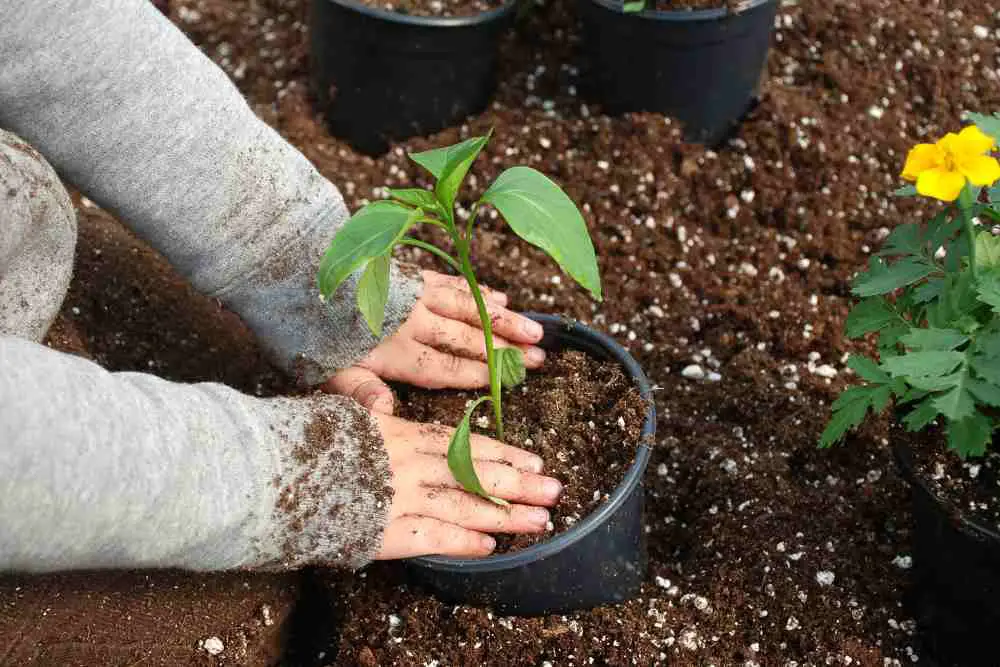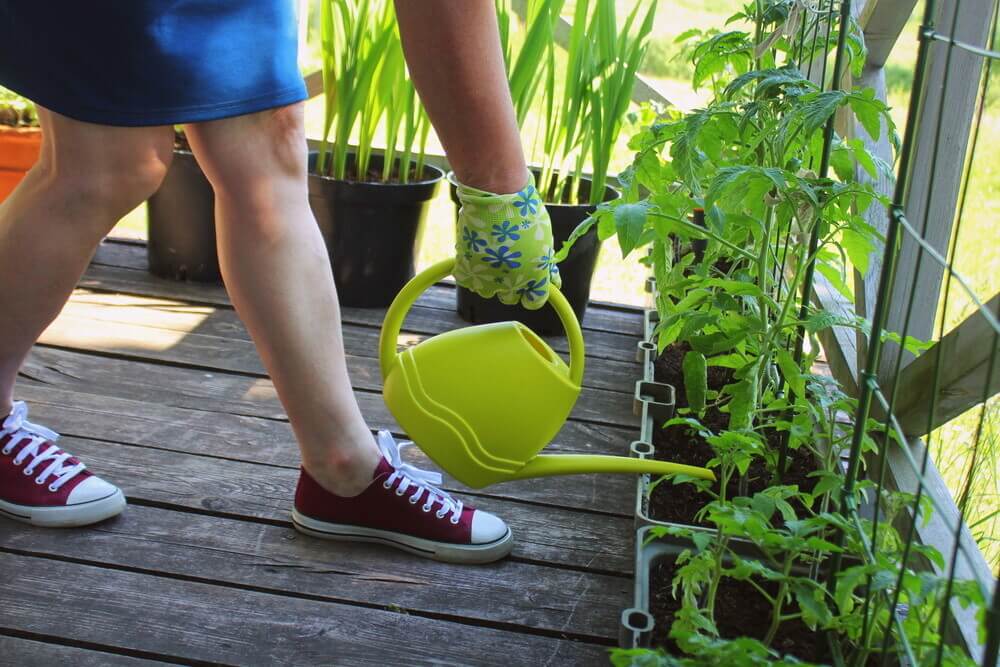Ultimate Guide to Vegetable Container Gardening for Beginners
Gardening is an excellent way to save money, eat healthily, and incorporate more vegetables into your diet. If you have your own grown vegetables when preparing dinner, you can walk out back and pick some fresh vegetables, and also you can enjoy them all year long.
If you’re considering starting a garden. You may be wondering if this is actually another crazy idea. How much time, effort, and money should you invest in your little garden? Can you get enough harvest in such a small space? Will your investment be worth it in the end?
Vegetable container gardening is the perfect way to grow your own food, even if you don’t have a lot of space.

If you don’t have enough space for a vegetable garden or if you’re present site is too small you can grow your vegetables in containers. A window sill, balcony, patio, or doorstep can also provide sufficient space for a productive container garden. Moreover, problems with soil-borne diseases, nematodes, or poor soil can also be overcome by switching to container gardening.
Container gardening affords attractive plant scaping in your balcony area. A dull patio or balcony area can be brightened by the addition of baskets of different kinds of vegetables or a colorful herb mix. Container gardening is especially useful for apartments or balconies because plants can be moved to get the maximum use of sunlight, and available space and to avoid destruction from, particularly nasty weather.
Crop Selection
Variety selection is extremely important for container gardening. Most varieties that do well when planted in a backyard garden can also do well in containers. Any vegetable that you grow in a typical backyard garden can use as a container-grown plant.
Vegetables that are ideally suited for container growing are tomatoes, squash, eggplant, peppers, green onions, parsley, beans, lettuce, radishes, pole beans, and cucumbers. Vegetables having vining growth habits require considerably more space.
Containers
There are many possible containers for gardening. Containers for vegetable plants must hold soil without spilling. It must have adequate drainage. It should be big enough to support plants when they are fully grown. It’s important to never have held products that would be toxic to plants or people.

You can use flower pots, barrels, recycled Styrofoam boxes, cut-off milk jugs, window boxes, and plastic clothes baskets, even pieces of drainage pipes or cinder blocks. The sizes of the containers you’re using vary according to the crop selection and space available.
Smaller container sizes are suitable for herbs, lettuce, and radish crops, they are easy to handle and provide adequate space for root growth. Containers are made of clay, wood, plastic, metal, or other materials. Container materials may be either porous or nonporous.
Glazed, metal, plastic, and glass containers are nonporous. It must drain adequately for successful yields based on the type or size of the container used.
Be sure that there are holes in the bottom for drainage so plant roots do not stand in water. The drain holes work best when they are located about ¼ to ½ inches from the bottom along the side. Add 1 inch of coarse gravel to the bottom of the container to improve drainage.
Growing Media
Growing media must provide nutrients, water, and physical support in order to grow healthy plants. A lightweight potting mix is recommended for container vegetable gardening. The soil took straight from the garden usually cannot be used in a container because it may contain too much clay.
In a container, if clay soil is of bad quality it will exaggerate since it consists of small particles and clay holds too much moisture when wet. It causes less amount of air for the roots, and it pulls away from the sides of the pot when dry.
Soilless or synthetic mixes are well suited for vegetable container gardening because these are free of weed seeds, and disease and hold moisture and nutrients. It may be composed of sawdust, perlite, peat moss, wood chips, or vermiculite. Many synthetic soil mixes are available at garden centers and they hold water better than soilless mixes.
Soilless mixes consist of a mixture of horticultural grade vermiculite, limestone, peat moss, garden fertilizer, and superphosphate.
Soilless mix like the peat-lite mix is generally too light for container vegetable gardening. It does not offer enough support to plant roots, and a strong wind can blow plants over and damage, them if the container is also lightweight.
Moreover, soilless mixes are sterile and contain few nutrients. Therefore, when fertilizers are added, trace elements must be included in your fertilizer mixture. If you are using a sterile mix you may add garden soil for weight and better water holding capacity but remember it may introduce insects, weeds, and diseases to your gardening.
Mix your own with one part peat moss, one part garden loam, and one-part clean coarse builder’s sand, adding a slow-release fertilizer (14-14-14) according to container size. Lime may also be needed to bring the pH to around 6.5 because vegetables grow preferably at a pH of 6 to 7. If it is possible you can do a soil test to determine nutrient and pH needs.
Planting
Fill the container with the media described above and cover most vegetable seeds with 1 inch to 2 inches of media to ensure good germination. Peat moss in the soil mix absorbs water therefore It is important to mix much more readily if wetted before putting the mix in the container.
Seed sowing and setting transplanting should be done according to the instructions on the package. Put a label with the name, variety, and date of planting on or in each container for easy identification.

After planting, gently soak the soil with water without washing out or displacing seeds. As well as seeds can also germinate in a baking pan, plastic tray, pot, or even a cardboard milk carton or using peat pellets or peat pots.
Most vegetables should transplant into containers after they develop their first two to three true leaves. The young root system of plants should not be damaged during transplanting. Also, transplants may be purchased from local nurseries or can be grown at home. If plants need cages, stakes, or other supports provide them because it will help to avoid root damage later.
Fertilizing
Fertilizer-added soil mix will have enough nutrients for 8- 10 weeks. If plants are grown longer than this, add a water-soluble fertilizer or time-release fertilizer at the recommended rate. Repeat every two to three weeks.
Water-soluble fertilizers are added to water and used when plants begin to grow actively but time-release fertilizer is mixed with the potting media at planting time. The application of organic manure and compost to soil helps to boost the activity of micro-organisms.
Preparing nutrient solution and then pouring it over the soil mix is the easiest way to add fertilizer to the plant. Good commercial fertilizer mixes are available to make nutrient solutions and always follow the application directions on the label. Always add the recommended rate of any fertilizer, since this may cause the fertilizer to burn and kill the plants. If you start your container gardening with seeds, apply only tap water to keep the soil mix moist enough until the seeds germinate.
Once the plants emerge from seeds, begin using the nutrient solution. The frequency of watering is varying from one crop to the other, usually once per day is adequate. Twice a day may be necessary if the vegetable produces a lot of foliage. Periods of slow growth require less water. Once a week leach the unused fertilizer out of the soil mix in the container by watering it with tap water.
It is recommended to add enough water to the container to cause free drainage from the bottom. This practice flushes harmful minerals out of the soil mix. It is good to occasionally add water with a nutrient solution containing minor elements. A water-soluble fertilizer that contains iron, zinc, boron, and manganese can be used, and always follow the label directions carefully. For transplants, begin watering with the nutrient solution the day you set them out.
Watering
Proper watering is essential for a successful container garden and watering daily or even twice daily may be necessary. Containers can dry out very quickly since they have a relatively small volume of soil, especially on a concrete patio in full sun.
Also, a combination of sun and dry wind may dry out pots. Therefore installing a drip irrigation system will be helpful. It is recommended to water the plants during the morning hours because watering at night aggravates insect pests and phytopathogens.

Apply water until it runs out of the drainage holes, poor drainage will slowly kill the plants. If the soil mix becomes water-logged, the plants will die from a lack of oxygen. Important to avoid wetting the foliage of plants since wet leaves will encourage plant diseases.
Use the nutrient solution for each watering time except for the weekly leaching when you use tap water. Water-holding gels called hydrogels are becoming popular for use in container gardening. The pot should never be in direct contact with the drainage water because it will absorb and keep the soil in the container too wet. The soil should never have water standing on top of it or be soggy.
Small pots tend to dry out more quickly than larger ones. If the soil in the container appears to be getting excessively dry, try to keep grouping the containers together so the foliage creates a canopy to help shade the soil and keep it cooler.
On a hot patio or balcony put containers on pallets or other structures that will prevent direct contact with the cement and allow air movement beneath the pots. Check containers at least once a day and twice even on hot, dry, or windy days. Mulches like compost, straw, shredded bark, pine needles, moss, and grass clippings can also be placed on top of the soil mix to reduce water loss.
Light
All vegetable plants grow better in full sunlight than in shade conditions. However, leafy crops such as lettuce, cabbage, greens, spinach, and parsley can tolerate shade Fruit-bearing plants, such as cucumbers, peppers, tomatoes, and eggplant need the most sun of all than root crops such as radishes, beets, turnips, and onions.
Discard the plant and soil from the pot at the end of the harvest season, and do not reuse the same soil for the second season of production. Properly composted planting media can be reused unless it will spread disease into the second season.
- Major advantages of container gardening are that you can place the vegetables in areas where they can receive the best possible growing conditions, provides an economic advantage for urban areas, Enhance food security, Recycle organic waste, inspires planners and designers, Reduction of transportation emissions, helps to maintain micro-climate for bees, butterflies, birds, and spiders and encourages local production, and balances family expenditure on vegetables.

- 29 Bucket Gardening Ideas for a Lush, Compact Garden - October 30, 2024
- 20+ Chic Boho Bedroom Ideas for a Cozy and Stylish Retreat - June 20, 2024
- 12+ Modern Boho Living Room Ideas to Create a Unique Oasis - June 10, 2024







